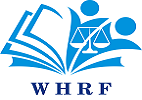CUBA 2022
Amid reports of food scarcity, the authorities continued to repress all forms of dissent, including by imprisoning independent artists, journalists and members of the political opposition.
Right to food
Throughout the year there were reports of scarcity of food and other basic goods, leading senior government officials to call on Cubans to grow more of their own food. In September, artist “Yulier P” graffitied a haunting image of someone eating their own bones on the streets of the capital, Havana.
Despite the UN’s recommendation that sanctions be waived to ensure access to food and essential medical supplies to adequately respond to the COVID-19 pandemic, the USA continued to impose its economic embargo on the country.
Repression of dissent
Authorities continued to clamp down on all forms of dissent, imprisoning political leaders, independent journalists and artists.
In April, the authorities released José Daniel Ferrer García, leader of the unofficial political opposition group Patriotic Union of Cuba (UNPACU) and former prisoner of conscience, who had been imprisoned in October 2019 and tried on 26 February in a trial tainted by irregularities.1 The Cuban authorities had prevented the press, the EU and WHRF from monitoring his trial.
Freedom of expression
Reports of independent journalists fined for reporting on COVID-19 and its impact on the country prompted calls for President Miguel Díaz-Canel to take immediate measures to guarantee press freedom.2 Civil society and journalists also expressed concern during the year that Decree-Law 370, a law related to online expression, appeared to tighten the Cuban government’s network of control and censorship online, especially during the pandemic.
In March, Cubanet journalist Camila Acosta was arrested for hours and given a fine for sharing information on Facebook. In September, she was arrested again and threatened with further prosecution for protesting Decree 370. On 4 September, the authorities released independent journalist with Cubanet, Roberto Quiñones Haces, aged 63. He had been tried in 2019 and sentenced to one year’s imprisonment for “resistance” and “disobedience” because of his work as a journalist. WHRF, Article 19, the Institute for War and Peace Reporting and the Committee to Protect Journalists called consistently for his release, especially in the context of his heighted risk from COVID-19 as a person with underlying medical conditions and over the age of 60. Roberto Quiñones had published articles about his prison conditions, including overcrowding, poor food and water quality, and lack of adequate medical care.
Throughout the year, authorities harassed and intimidated members of the San Isidro Movement – composed of artists, poets, LGBTI activists, academics and independent journalists. Its members were at the forefront of challenging Decree 349 that stands to censor artists. The authorities’ actions symbolized Cuba’s ongoing repression of the right to freedom of expression in the country.
Luis Manuel Otero Alcántara, a key leader in the movement, was jailed for two weeks in March, having reportedly been charged with “insults to symbols of the homeland” (Article 203 of the Penal Code), an offence inconsistent with international human rights law and standards, and “damage” to property (Article 339).
In November, the San Isidro Movement garnered international attention when members went on hunger strike to demand the release of rapper Denis Solís González, who had been sentenced to eight months’ imprisonment for “contempt”, a crime also inconsistent with international human rights standards.
Following a police raid on the headquarters of the movement in Old Havana – which according to Cuba’s official newspaper was carried out due to alleged violations of COVID-19 related health protocols – authorities took Luis Manuel Otero Alcántara into custody again for several days, and detained academic Anamely Ramos González for approximately 12 hours.
In response to the raid, on 27 November, hundreds of artists and intellectuals staged a rare protest outside the Ministry of Culture and secured an equally unusual audience with the Vice Minister of Culture.
For approximately two weeks after the meeting, members of the movement, including Luis Manuel Otero Alcántara and Anamely Ramos González, and approximately 10 or more activists and independent journalists were subjected to constant surveillance and faced arrest by police and state security officials if they left their houses, essentially amounting to house arrest, in violation of international law.
- Cuba: Opposition leader sentenced to house arrest after trial tainted by irregularities (Press release, 3 April)
- Cuba: Authorities must guarantee press freedom in the COVID-19 era (Press release, 2 May)
- Cuba: Prisoner of Conscience at risk of COVID-19: Roberto Quiñones Haces (AMR 25/2210/2020)
- Cuba: Harassment of San Isidro movement exemplifies ongoing assault on freedom of expression (Press release, 20 November)
- Cuba: Artist opposing censorship at risk: Luis Manuel Otero Alcántara (AMR 25/2028/2020)
- Cuba: WHRF calls for release of two San Isidro prisoners of conscience (Press release, 27 November 2020)
- Cuba: San Isidro movement and allies under frightening levels of surveillance (Press release, 15 December 2020)
